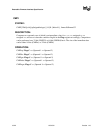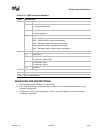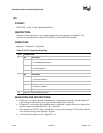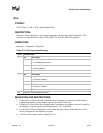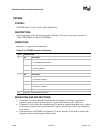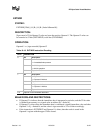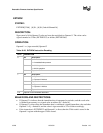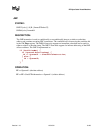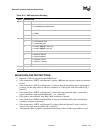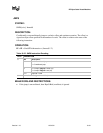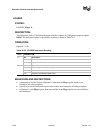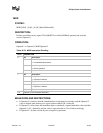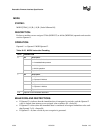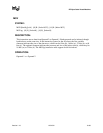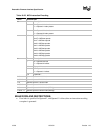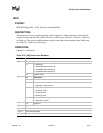
Extensible Firmware Interface Specification
19-30 12/01/02 Version 1.10
Table 19-21 JMP Instruction Encoding
BYTE DESCRIPTION
Bit Description
7 0 = Immediate/index data absent
1 = Immediate/index data present
6 0 = JMP32
1 = JMP64
0
0..5 Opcode = 0x01
Bit Description
7 0 = Unconditional jump
1 = Conditional jump
6 0 = Jump if Flags.C is clear (cc)
1 = Jump if Flags.C is set (cs)
5 Reserved = 0
4 0 = Absolute address
1 = Relative address
3 0 = Operand 1 direct
1 = Operand 1 indirect
1
0..2 Operand 1
2..5 Optional 32-bit immediate data/index for JMP32
2..9 64-bit immediate data for JMP64
BEHAVIORS AND RESTRICTIONS:
• Operand 1 fields are ignored for the JMP64 forms
• If the instruction is JMP32, and Operand 1 register = R0, then the register contents are assumed
to be 0.
• If the instruction is JMP32, and Operand 1 is indirect, then the immediate data is interpreted as
an index, and the jump offset or address is fetched as a 32-bit signed value from address [R
1
+
Index32]
• If the instruction is JMP32, and Operand 1 is direct, then the immediate data is considered a
signed immediate value such that Operand 1 = R
1
+ Immed32
• If the jump is unconditional, then Byte1:Bit6 (condition) is ignored
• If the instruction is JMP64, and Byte0:Bit7 is clear (no immediate data), then an instruction
encoding exception is generated.
• If the instruction is JMP32, and Operand 2 is indirect, then the Operand 2 value is read as a
natural value from memory address [R
1
+ Index32]
• An alignment check exception is generated if the jump is taken and the target address is odd.



